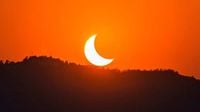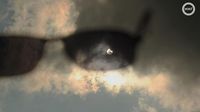The first partial solar eclipse of 2025 is set to occur on Saturday, March 29, and will be visible across various regions including parts of Europe, North America, and Russia, according to reports from multiple sources. This astronomical event is particularly notable as it will allow observers to see up to 94% of the Sun covered by the Moon at its peak.
Beginning at 11:50 AM Moscow time (08:50 GMT), the eclipse will last until 3:43 PM Moscow time (12:43 GMT), with its maximum phase occurring at 1:47 PM Moscow time (10:47 GMT). During this time, the Moon will obscure a significant portion of the Sun, providing a unique spectacle for those in the right locations.
Astrophysicists have noted that this eclipse will be a part of a larger phenomenon known as the "eclipse corridor," which began with a lunar eclipse on March 14. While scientists regard this corridor as a standard astronomical occurrence, astrologers often attribute special significance to it, linking it to karmic events and personal reflection.
For those in Ukraine, there is a chance to witness this partial eclipse and observe sunspots on the Sun's surface. Sunspots are dark areas that can influence magnetic disturbances in the Sun's atmosphere, and they vary in number according to an 11-year solar cycle. In fact, NOAA and NASA reported in October 2024 that the Sun had reached its maximum activity, coinciding with the peak in sunspots.
The visibility of the eclipse will extend to several regions: Western and Northern Europe, the north of Eastern Europe, the northeastern parts of North America, and the northwestern areas of Africa. In Russia, the eclipse will be particularly visible in the northwestern regions, with cities like Murmansk, Arkhangelsk, and St. Petersburg experiencing varying degrees of obscuration.
In Murmansk, the eclipse will reach a magnitude of approximately 0.398, obscuring about 28.61% of the Sun. Meanwhile, St. Petersburg will see a smaller obscuration of about 12.72%. Observers in the northwestern regions of Russia can expect to witness the maximum phase of the eclipse at different times, with Murmansk experiencing it around 2:45 PM local time.
Notably, the eclipse will also be observable in parts of the USA and Canada, particularly in the northeastern areas where it will occur at dawn. Cities such as Presque Isle, Maine, will see the maximum phase at 6:21 AM local time, where 85.40% of the Sun will be obscured. Similarly, Halifax in Canada will experience a significant obscuration of 82.78% at 7:17 AM local time.
In Europe, the conditions for viewing the eclipse will be favorable, especially in countries like Iceland, Ireland, and the United Kingdom. Reykjavik will experience a maximum obscuration of 67.70% at 11:05 AM local time, making it one of the best locations for observation.
As the eclipse approaches, experts urge caution for those wishing to observe the event. Looking directly at the Sun without proper eye protection can lead to severe eye damage. The safest methods to view the eclipse include using certified solar glasses, solar filters for telescopes, or employing indirect viewing techniques such as a pinhole projector.
For those who do not wish to wait for the eclipse, NASA suggests using the Solar Dynamics Observatory to observe the Sun in real-time. This method allows enthusiasts to track solar activity and sunspots without the risks associated with direct viewing.
During the eclipse, it is advisable to stay indoors and refrain from consuming food or water, as some traditions suggest this period is ideal for reflection and cleansing. Engaging in self-development activities, such as journaling or meditative practices, is also recommended during this time.
The solar eclipse on March 29, 2025, is significant not only for its visibility across a wide area but also for the unique experiences it offers to observers. With millions of people across various continents able to witness this celestial event, it stands out as one of the most accessible solar eclipses in recent years.
Looking ahead, the next solar eclipse will occur on September 21, 2025, which will also be a partial eclipse, primarily visible in New Zealand. For those interested in the astronomical phenomena, this upcoming eclipse is a perfect opportunity to engage with the wonders of the universe.








